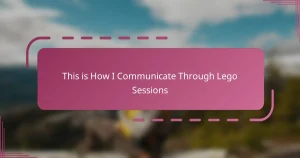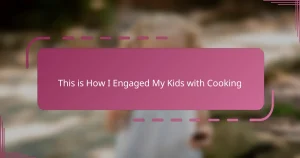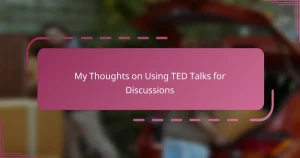Key takeaways
- Effective communication in parenting is rooted in listening and creating a safe space for children to express themselves.
- Communication activities enhance children’s confidence, empathy, and emotional resilience, fostering meaningful connections.
- Wonder Friends tools encourage playful, heartfelt conversations, making communication enjoyable and less pressured for both parents and children.
- Establishing daily rituals and cues for communication helps integrate open dialogue into family routines, strengthening relationships over time.
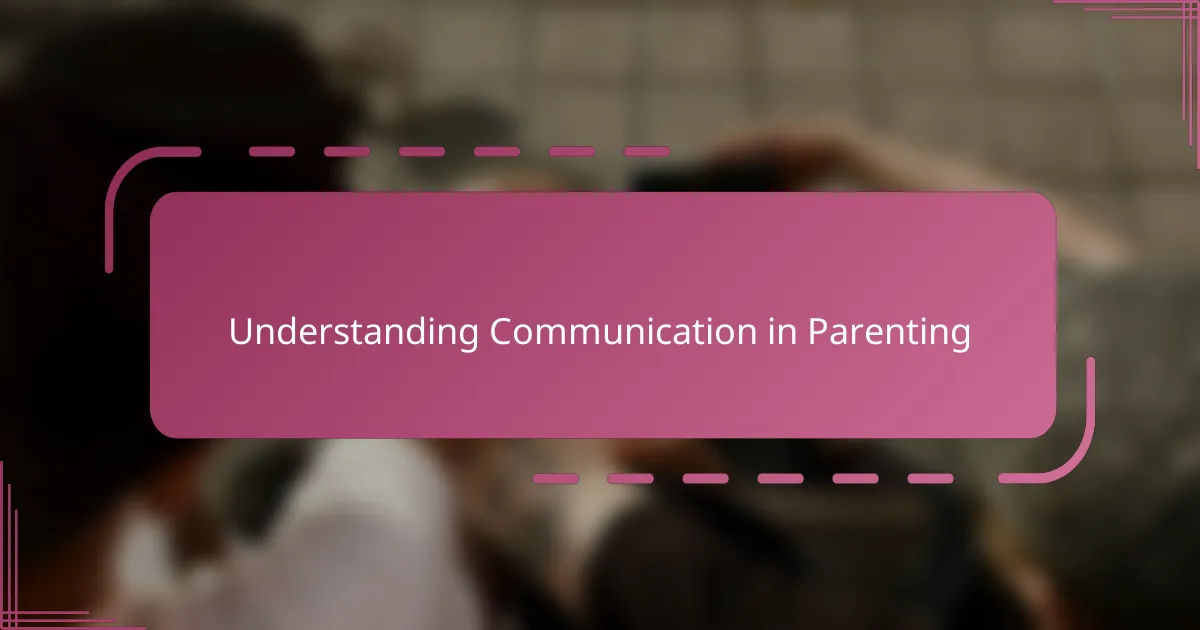
Understanding Communication in Parenting
Communication in parenting isn’t just about talking; it’s about truly connecting. I’ve often found that the moments when my child opens up are less about what I say and more about how I listen. Have you noticed how our busy lives can sometimes make us miss these small but meaningful exchanges?
When I reflect on my own journey, I realize that effective communication builds trust and emotional security. Kids pick up on so much beyond words—the tone, the patience, the genuine interest. How often do we pause to consider what our children are really trying to tell us beneath the surface?
Understanding communication means recognizing it as a two-way street. It’s about creating a safe space where children feel heard and valued. I believe that when we invest time and empathy in these interactions, we lay the foundation for stronger relationships that last a lifetime.
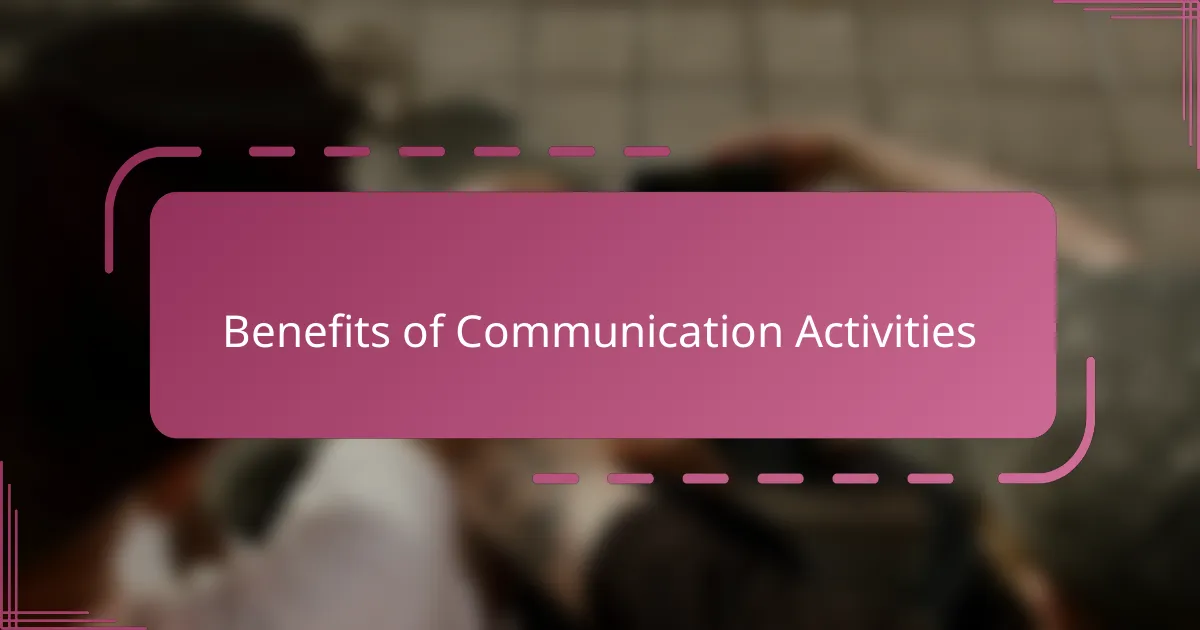
Benefits of Communication Activities
Communication activities do more than just encourage kids to speak—they help them express feelings they might not have the words for yet. I’ve seen firsthand how my child’s confidence grew when we played simple storytelling games, turning hesitant murmurs into animated conversations. Isn’t it amazing how these moments can reveal so much about a child’s inner world?
Another benefit I’ve noticed is how these activities teach patience and active listening, not just for the child but for me as a parent too. When we take turns and truly focus on each other, it creates a rhythm of respect that spills over into everyday life. It made me wonder, how often do we practice this kind of mindful attention outside structured activities?
Finally, communication exercises help build emotional resilience by giving children a safe place to explore tricky topics. Through guided play and discussion, my child learned it’s okay to make mistakes and ask for help. Don’t we all need that reminder—that openness leads to growth and deeper connection?
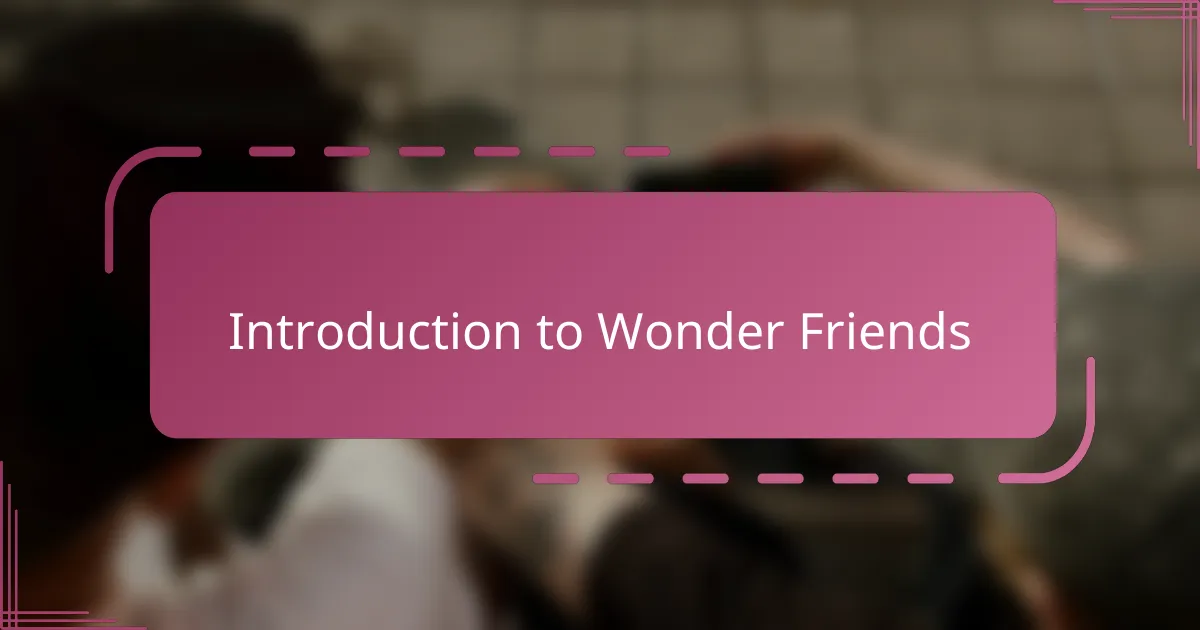
Introduction to Wonder Friends
Wonder Friends is a unique set of tools designed to spark meaningful conversations between parents and children. When I first introduced Wonder Friends to my family, I was amazed at how effortlessly they encouraged my child to share thoughts and feelings. Have you ever noticed how a simple prompt or character can open doors that words alone sometimes struggle to unlock?
What makes Wonder Friends truly special is their ability to combine fun with emotional learning. From my experience, these engaging activities gently guide kids to express themselves without fear or hesitation. It got me thinking—how can something so playful be such a powerful bridge in communication?
Using Wonder Friends felt like discovering a secret language, one that deepened our connection in ways I hadn’t anticipated. It reminded me that nurturing communication doesn’t always have to be serious; sometimes, the best conversations start with a little wonder and imagination.
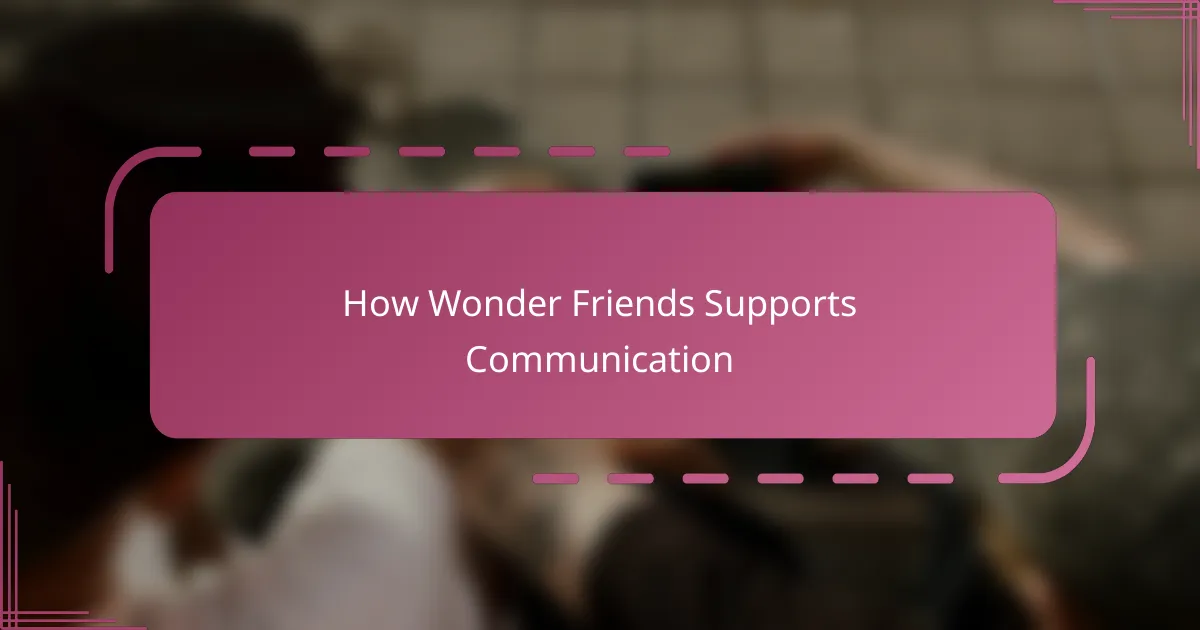
How Wonder Friends Supports Communication
What I find most remarkable about Wonder Friends is how they create a safe and inviting space for my child to express thoughts that might otherwise stay locked inside. Have you ever noticed how kids can open up more naturally when they’re interacting with characters or stories? For us, these playful prompts turned hesitant moments into heartfelt conversations that felt genuine and spontaneous.
I also realized that Wonder Friends encourage not just talking, but listening—on both sides. When my child responds to a Wonder Friend’s question or story, it invites me to pause and truly pay attention, strengthening our connection in the process. It made me think, how often do we give children that undivided focus in everyday life?
Another thing I appreciate is how Wonder Friends effortlessly blend learning with fun, making communication feel less like a task and more like a shared adventure. From my experience, this balance helps reduce any pressure my child might feel about expressing emotions. Isn’t it refreshing when conversation becomes something you both look forward to, rather than something you have to make happen?
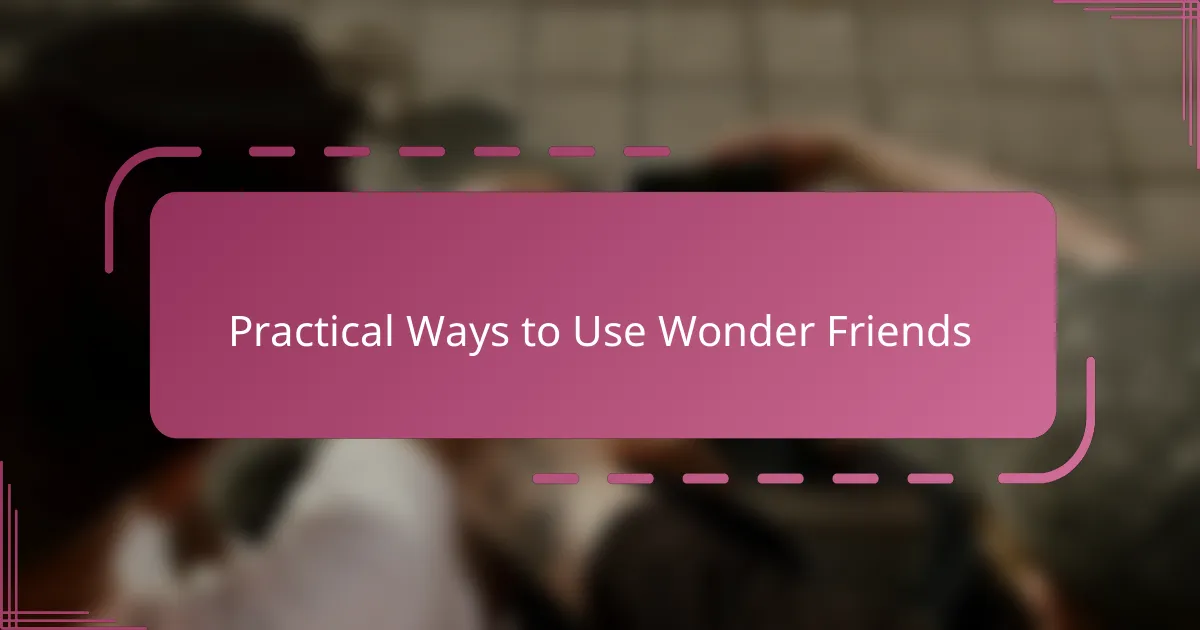
Practical Ways to Use Wonder Friends
One practical way I used Wonder Friends was during our bedtime routine. Instead of the usual rush, we’d pick a character and ask each other questions inspired by their stories. It surprised me how my child began sharing thoughts about their day without me even prompting—it felt natural and heartfelt.
I also found that introducing Wonder Friends during moments of conflict helped soften the atmosphere. When emotions ran high, bringing out a Wonder Friend prompted us to talk about feelings rather than argue. Have you ever noticed how shifting the focus to a playful character can ease tension and open doors to understanding?
Sometimes, I’d leave a Wonder Friend casually in the living room, and my child would initiate a conversation out of curiosity or connection. These spontaneous talks felt like small victories because they weren’t forced; they came from genuine interest. Doesn’t it remind you of how valuable those unexpected moments of connection are?
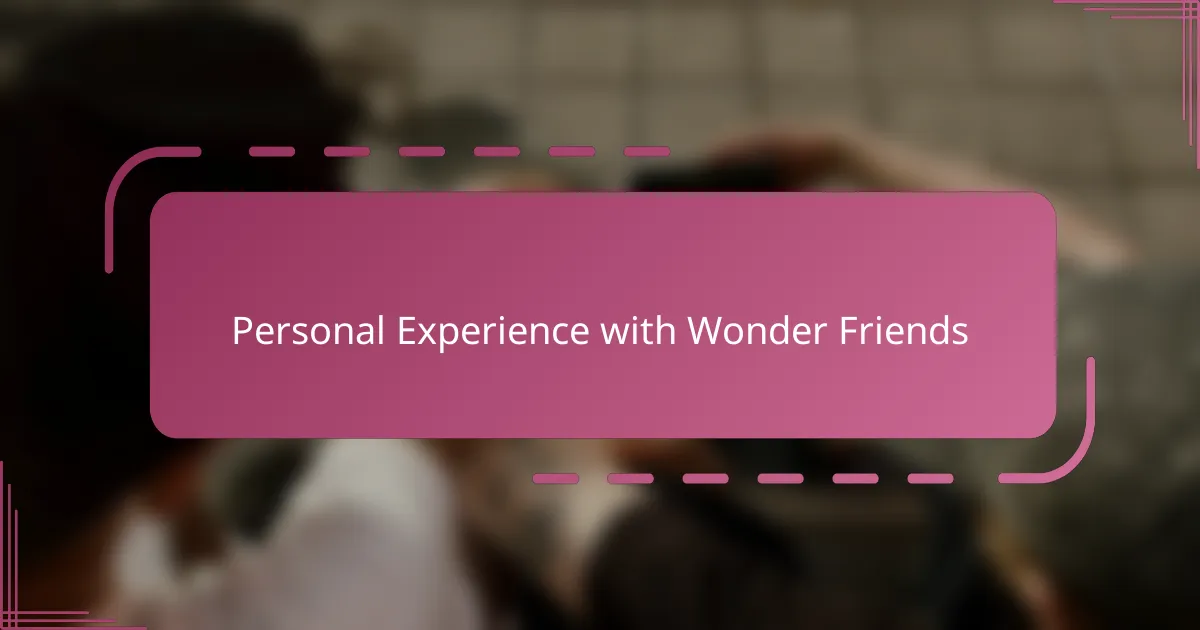
Personal Experience with Wonder Friends
Using Wonder Friends has genuinely transformed the way my child and I communicate. I remember one afternoon when my little one was unusually quiet, and instead of pushing for words, I introduced a Wonder Friend character. Suddenly, my child started sharing feelings about school that had been bottled up for days. Have you ever witnessed a breakthrough like that emerge so naturally?
What struck me most was how these playful characters removed the pressure from conversations. It wasn’t about answering questions perfectly but about exploring thoughts freely. One evening, after a particularly long day, pulling out Wonder Friends felt like a breath of fresh air for both of us—a gentle nudge back to connection rather than frustration.
There were moments when I caught myself learning just as much as my child. Wonder Friends not only invited my child’s voice but also deepened my understanding of their world. Those shared stories sparked empathy and patience in me, reminding me how communication is truly a two-way dance. Have you ever found a tool that made you see your child’s perspective more clearly? This felt exactly like that.
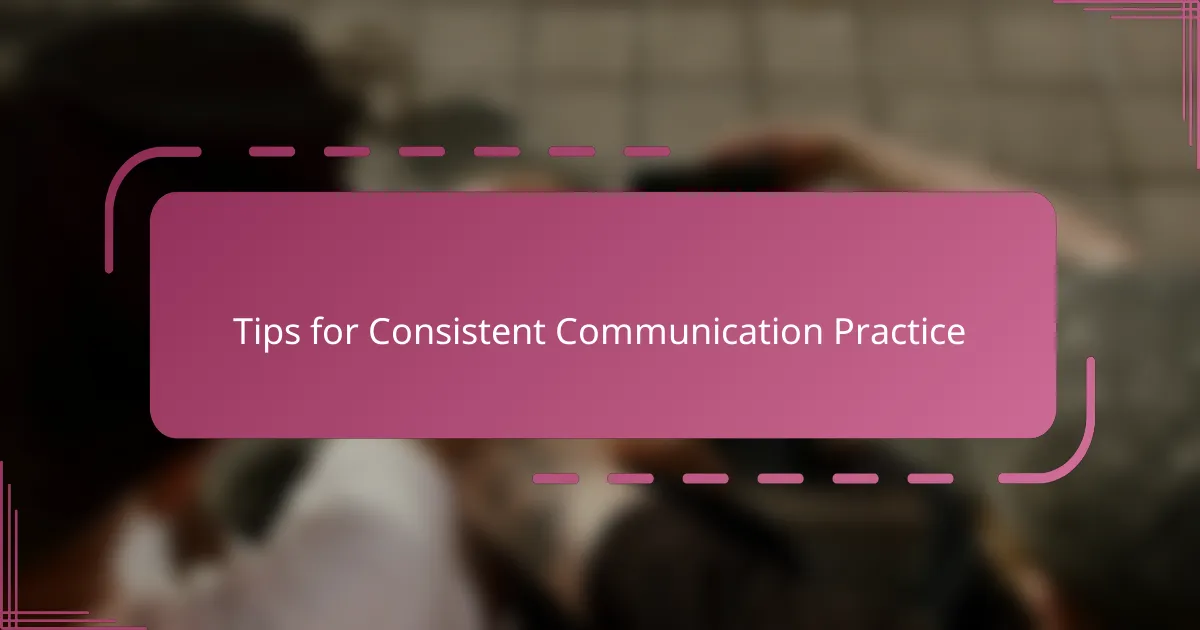
Tips for Consistent Communication Practice
Consistency in communication can feel like a challenge, especially when life gets hectic. I found that setting small, daily rituals—like a five-minute chat during breakfast—helped make connection a natural part of our routine. Have you tried simple, regular check-ins? They might sound minor but, to me, they’ve become the quiet glue holding our conversations together.
Another tip that worked wonders was creating cues for communication. For instance, using Wonder Friends as a gentle reminder to pause and share feelings transformed our interactions. When I saw my child pick up a character to start a talk, it felt like a subtle invitation to connect without pressure. Isn’t it amazing how a little prompt can turn into meaningful dialogue?
Finally, patience is key. I’ve learned to embrace moments of silence and give space instead of rushing to fill gaps with questions. Sometimes, just being present and open encourages kids to speak in their own time. Have you noticed how giving children this freedom deepens trust and makes each conversation more genuine?
